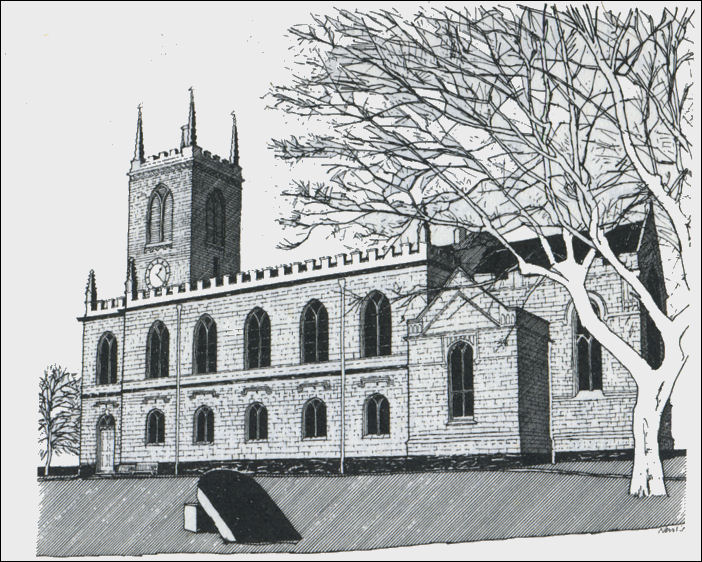|
|
|
![]() back to "The Grand Tour" index
back to "The Grand Tour" index
Neville Malkin's "Grand Tour" of the Potteries
buildings South of the Potteries
![]()
![]()
![]()
previous: Izaak Walton's
cottage, Shallowford
next: The Jervis
Mausoleum,
Stone
contents: index of
buildings south of the Potteries
|
No 3 - St. Michael's Church, Stone
Staffordshire Past Tracks |

St. Michael's Church,
Stone
pen drawing by Neville Malkin - January 1975
|
The interior is particularly interesting and has some fine stained glass which depicts saints and persons connected with Stone and its ecclesiastical past. There is a painting of the Archangel Michael by Sir William Beechey, R.A., which was commissioned by Sir John Jervis and presented to the church in 1805, various plate, memorials, some original box-pews and other interesting features. The church was consecrated by Frederick, Lord Bishop of Lichfield and Coventry, on June 21st, 1758, and cost in the region of £5,000 one-third of which was raised by the sale of pews. The origins of the church and Stone go back to the time when Wulfhere, King of Mercia (657-674), put his two sons to death because of their belief in the Christian faith. Their mother had the bodies interred beneath a great pile of stones and later on erected a church on the site.
The priory grew and prospered until the 13th century when it succeeded in becoming independent from Kenilworth Priory, which had been in control since its inception. The Stone Priory was suppressed in 1537, and the site and properties sold in 1538. The 12th century Priory Church remained and continued as a place of worship until 1749 when, in a dreadful state of repair, it finally collapsed; the present church was built as a replacement." Neville Malkin 15th January
1975
|
St Michael's Church, Stonephoto: © Eirian Evans August 2008
and licensed for reuse under this Creative Commons Licence
High altar, St Michael & St Wulfad's Churchphoto: © Ian Cardinal November 2006
and licensed for reuse under this Creative Commons Licence
previous: Izaak Walton's cottage, Shallowford
next: The Jervis Mausoleum, Stone
contents: index of buildings south of the Potteries
back to "The Grand Tour" index